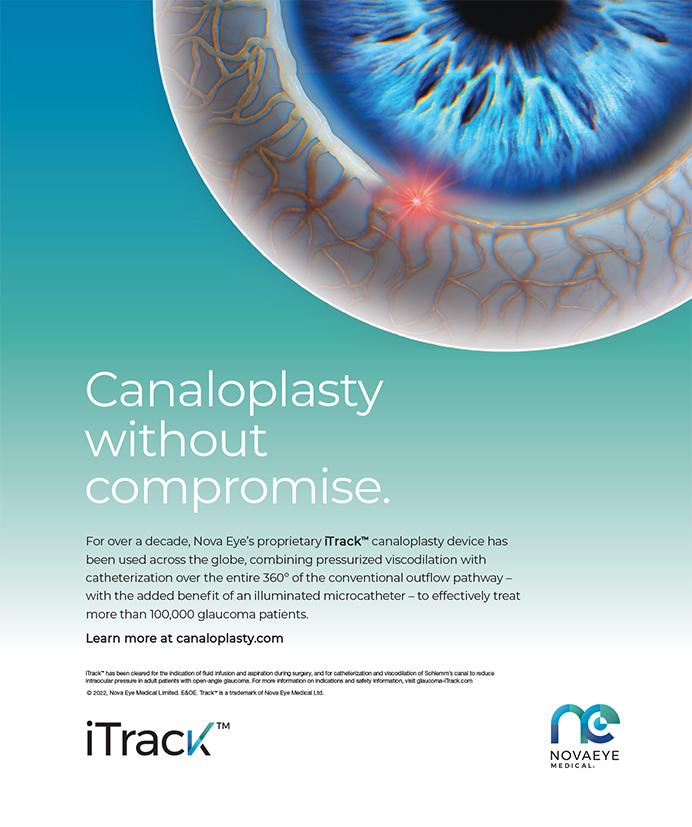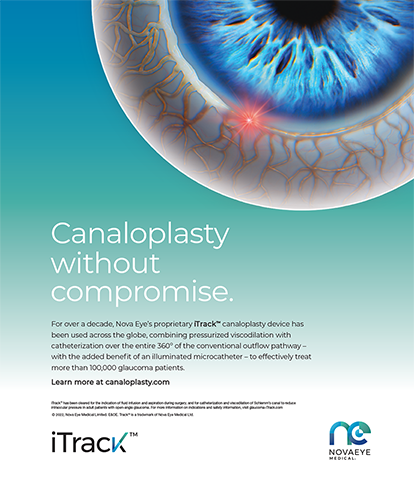The worldwide emergence and spread of antimicrobial resistance has become a recent concern. There have been a number of contributing factors to the development of antibiotic resistance: (1) the unnecessary use of antibiotics; (2) a lack of adequate diagnostic criteria; (3) unnecessary treatment that often utilizes expensive, broad-spectrum agents when other agents would be equally efficient; and importantly, (4) the irrational use of antibiotics for prophylaxis of infection. The principle areas in which the improper use of antibiotics has occurred in ophthalmology include the inappropriate treatment of blepharitis, especially posterior lid margin disease with meibomian gland dysfunction; conjunctivitis, notably viral conjunctivitis or allergic conjunctivitis; and in trying to prevent infection in cataract and refractive surgeries.
Epidemiology of Endophthalmitis After Cataract Surgery In cataract surgery, the incidence rates of endophthalmitis have not changed much over the last decade; the rate of infection is approximately 0.08%. In more complicated surgeries such as pars plana vitrectomy, which is lengthier and involves multiple passages of instruments in and out of the eye, one would expect a higher infection rate. However, pars plana vitrectomy has a rate of infection of about 0.04%, or half of what is seen in cataract surgery. It is possible that the lower incidence of endophthalmitis after vitrectomy is due to the removal of the vitreous scaffold that is required for organisms to create endophthalmitis. As surgeons increase the complexity of intraocular procedures, the rates of infection increase. A combined cataract and trabeculectomy procedure has an approximate infection rate of 0.11%, and glaucoma filtering procedure surgery has an approximate rate of 0.12%. Corneal transplants pose concern regarding donor-to-host transmission with the possibility of a contaminated donor button being transplanted. The rate of infection with corneal transplant is about 0.18%. In very complicated procedures, such as secondary IOL implantation (especially with suture fixation), the rate of infection may be as high as 0.34% (Figure 1).
The Role of the Normal Microflora of the Eye
There has been much discussion concerning the role of normal ocular flora. The majority of endophthalmitis cases (approximately 75% to 95%) involve organisms from the conjunctiva in the periocular area, and include common enemies such as coagulase negative staphylococci, Staphylococcus epidermidis, Staphylococcus aureus, streptococci, and even relatively anaerobic organisms such as Propionibacterium acnes. Some molecular microbiologic studies have documented the molecular identity of organisms recovered from the aqueous humor and the vitreous humor in cases of endophthalmitis with those from the patient's own periocular flora (Figure 2). These studies showed that organisms were present on the patients' external ocular tissues, such as the eyelid margins and the lashes, as well as the preocular tear film. Despite tremendous advances in the technology associated with modern cataract surgery, sampling the anterior chamber fluid at the conclusion of cataract surgery has shown that intraoperative contamination rates may range from 5% to 40% of cases. We have seen that the IOL haptic material, as well as the IOL insertion techniques, can be indirectly implicated in this intraocular contamination. Bacteria are able to colonize IOLs by different mechanisms that promote adherence to the prosthetic material. In addition, it appears that the bacteria can adhere readily to all of the foldable IOL materials.
Mechanical Strategies
There have been some time-honored teachings in ophthalmology, including “the solution to pollution is dilution.” The use of copious irrigation to flush a body site is often recommended as a way to reduce bacterial colonization. In reality, aggressive flushing of the conjunctiva with sterile saline actually increases the species and colony counts, compared to just rinsing. It is probable that the aggressive conjunctival flushing actually dredges up organisms from the conjunctival fornices, where they can come into contact with the wound. Also, aggressive scrubbing of the eyelashes and the lid margins immediately prior to the procedure may actually dislodge material and increase the species and colony counts. Blepharitis that is clinically significant should be treated well in advance of the cataract surgery using commercial eyelid cleansing preparations or antibiotics to reduce colonization. However, it is still imperative for the ocular surgeon to pay attention to the lids and lashes. Prior to surgery, one may use an antiseptic solution on the skin around the eye and on the lashes themselves.
Chemical Strategies
In 1884, Carl Crede, MD, used silver-containing solutions as chemical disinfectants for prophylaxis against neonatal conjunctivitis. Since then, there has been a gradual shift away from chemical chemoprophylaxis to the use of antibiotics for reducing conjunctival colonization. The degree to which the ocular flora are reduced depends partly on the choice of antibiotic agent, how frequently and for what duration the antibiotic is administered prior to the surgery, which bacterial species are present on the ocular surface, and what the antimicrobial susceptibility pattern is of those species. Work that we have conducted in our laboratory indicates that antibiotics vary in effectiveness in reducing conjunctival colonization. Of the commercially available antibiotics, the fluoroquinolones have the greatest potency, followed by the aminoglycosides; various combination products, including neomycin, polymyxin B, and bacitracin; sulfacetamide, and then finally chloramphenicol. In general, ophthalmologists have preferred a broad-spectrum approach to try to cover the widest array of potential pathogens that might complicate a cataract surgery, and for this reason, a preference for the fluoroquinolones has gradually evolved. Fluoroquinolones are agents that are bactericidal in nature, and bind to and interfere with the activity of type II topoisomerases that are required for DNA replication, including DNA gyrase and topoisomerase IV. Since the discovery of nalidixic acid during the purification of chloroquin, which was the first member of the fluoroquinolone family, there has been a gradual enhancement of the spectrum of activity in this family tree of antibiotics. We now have commercially available antibiotics such as ciprofloxacin, ofloxacin, and levofloxacin that have a broad spectrum of activity and include not only gram-negative ocular pathogens, but also gram-positive pathogens, which are the most frequently implicated in endophthalmitis. Expanded-spectrum fluoroquinolones under development include compounds such as gatifloxacin, moxifloxacin, gemifloxacin, and others that are even more potent against gram-positive pathogens, in particular streptococcal pathogens that sometimes cause severe endophthalmitis.
Gram-positive organisms account for 90% to 95% of ocular infections. Streptococcus is a particularly problematic ocular pathogen that can cause severe keratitis and endophthalmitis, and therefore prophylactic strategies should address it. There are some newer narrow spectrum gram-positive agents under development, including members of the oxazolidinones, streptogramines, and even peptides, such as magainins, cecropins, and defensins. Linezolid is a gram-positive-acting agent that is effective against even methicillin-resistant staphylococci as well as vancomycin-resistant organisms. It has limited or no gram-negative activity, however.
Reducing ocular surface colonization
It appears that in terms of developing the most rational strategy for reducing conjunctival colonization, antibiotics should be administered topically in a brief, preoperative regimen immediately prior to creating the incision. Studies have shown that newer agents such as the fluoroquinolones applied prior to creating the incision can significantly reduce ocular surface flora compared to untreated controls. It is unclear, however, if several days of preoperative antibiotic administration is superior to administration on the day of surgery. No antibiotic alone can consistently produce ocular surface sterility; surgeons are simply attempting to reduce conjunctival colonization.
It is important for the ophthalmic surgeon to understand the fundamental difference between an antiseptic and an antibiotic. Antiseptics work via a contact mechanism of action, and thereby have immediacy of effect, whereas antibiotics require time to be taken up by the bacteria and to diffuse to the site of action, whether it is bacterial cell wall synthesis, DNA replication, or protein synthesis. The two most common antiseptics that have been widely used in ophthalmic surgery include povidone-iodine and chlorhexidine-gluconate. Povidone-iodine has been used as a disinfectant since 1839. It is rapidly microbicidal, not only for bacteria and fungi, but also for viruses, including the human immunodeficiency virus within 30 seconds of application. The common solution used for skin preparation is a 10% povidone-iodine solution. A 5% sterile ophthalmic prep solution may be applied directly to the ocular surface.
Clinical and cost-effective strategies
Because endophthalmitis is fortunately such a rare event in ophthalmology, it is difficult to design a prospective, randomized, clinical trial that would conclusively demonstrate the effectiveness of various prophylactic strategies. Ophthalmic surgeons need to rely upon surrogate evidence to determine the best strategies. A study by Drs. Speaker and Menikoff published in Ophthalmology in 1991 determined that the application of topical povidone-iodine alone significantly reduced the clinical occurrence of endophthalmitis. Data from our laboratory and elsewhere have shown that the combination of antibiotics and antiseptics have a significantly greater reduction in bacterial colony counts than either applied alone. Ocular surgeons should apply the antibiotic prior to the antiseptic in order to have the greatest effect because of the time-dependent process involving the antibiotic. Additional considerations regarding prophylaxis apart from efficacy include toxicity and allergic reaction, potential alteration of nonpathogenic ocular flora, and the development of resistant organisms. Pharmacoeconomic considerations are increasingly important with respect to antibiotic selection in the era of cost-containment as well as decreased reimbursement for ocular surgery.
Final Considerations
In conclusion, recommendations for antimicrobial prophylaxis in ophthalmic surgery include the selection of a fluoroquinolone antibiotic as the primary choice. Preoperatively, a fluoroquinolone antibiotic such as ciprofloxacin 0.3%, levofloxacin 0.5%, or ofloxacin 0.3% should be applied for four doses every 5 minutes in the preoperative patient-holding area. Topical povidone-iodine 0.5% antiseptic solution should be applied immediately prior to creating the incision. It is important not to excessively flush the ocular surface with saline, as this may dredge up organisms from the conjunctival cul-de-sac. One of the best barrier methods for preventing infection is the careful occlusive adhesive draping of the eyelids to sequester the cilia and the meibomian gland orifices from the operative field. Ocular surgeons should also minimize the time the IOL is exposed in the operating room air, and avoid direct contact with the ocular surface. Newer injection devices allow for the surgeon to place the IOL directly from the sterile package into the injector and to insert the IOL directly into the capsular bag without ever coming into contact with the preoperative tear film, the ocular surface, or the corneal wound. Ocular surgeons should be discouraged from using antibiotics in irrigating solutions. In addition, surgeons should avoid the use of subconjunctival aminoglycosides, as they may rarely cause severe irreversible macular infarction. If surgeons are going to use antibiotics in the postoperative period, a topical fluoroquinolone applied in a brief pulse fashion every 2 hours for 48 hours, then six times a day for 5 days, followed by discontinuance would be the most rational dosing regimen. By administering this pulse of antibiotic in the perioperative critical period, where the organisms have a window of opportunity, one may prevent infection from occurring.
Additionally, ocular surgeons should not confuse prophylaxis with treatment, as the two are clearly distinct strategies. The greatest mistakes occur where there is a blurring of therapeutic considerations with prophylactic considerations. Lastly, not only do we deal in a hostile microbiological world, but we also are in a rather harsh medical/legal environment, and we need to devise strategies to protect not only our patients from developing infections, but also ourselves from medical legal action that may occur as a result of these rare, but devastating surgical misadventures.
Terrence P. O'Brien, MD, serves as Associate Professor of Ophthalmology at the Wilmer Ophthalmological Institute of Johns Hopkins University School of Medicine as Director, Refractive Eye Surgery, and Director, Ocular Infectious Diseases. Dr. O'Brien may be reached at (410) 583-2842; tobrien@jhmi.edu

